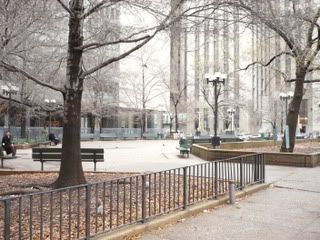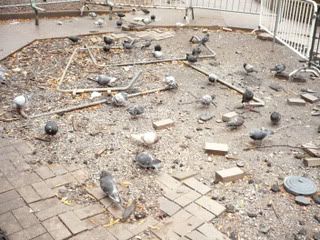Dorothy was right. There really is no place like home.
I’ve been to some of the great capitals of Europe — London, Paris, Copenhagen, Madrid. I’ve been to Jerusalem, the ancient spiritual home of three great religions. I’ve been to beautiful and fascinating old towns like Toledo (Spain), Copenhagen, Heidelberg, Montreal. Yet my own town, New York City, in whose suburbs I grew up and in which I now spend almost every day of my life, remains more deeply and endlessly fascinating to me than any of them.
You’d think it would become old and tired, boring and same-old. But it doesn’t. And I think I’ve figured out why.
The great cities and historic towns I’ve visited, especially in what we used to quaintly call the “Old World,” tend to have a powerful dedication to their pasts, avidly preserving their monuments. Roman ruins, medieval castles, royal palaces and estates, historic sites and neighborhoods are all right there for locals to take pride in and tourists to ogle. The great metropolises may spread out and become super-cities, but their “old town” neighborhoods remain.
New York, on the other hand, is constantly being torn down and rebuilt. Its 400-year history is there, but you have to dig for it, literally or in museums and books. You have to push aside the heavy crust of present-day culture, commerce, and architecture to reach the lower layers of the past. Otherwise, you could walk the city for days and see precious little that predates the 20th century. So many ancestors settled here when they came through Ellis Island, there is a lot of history on these streets, and nowadays people want to reconnect with that history once again by using websites like Genealogy Bank to look back and find their family tree to see where their ancestors went after arriving here, as well as what they are doing now.
New York has been a center of commerce for its whole history. Before landfill extended lower Manhattan several blocks into the rivers that frame it to the east and west, Wall Street ended at Water Street, at the river’s edge, and here stood the Meal Market.  But grains weren’t the only commodities sold here – the Meal Market was also the Slave Market.
But grains weren’t the only commodities sold here – the Meal Market was also the Slave Market.
Few of us think about the heavy presence of slaves in our city’s history. In fact, slavery wasn’t completely abolished in New York until 1827. A major exhibit at the New-York Historical Society helped educate a lot of us about that a few years ago. But how many Wall Street wizards – many of them now walking the streets looking for work, but hardly in danger of being sold at auction – think about the evil trade that was conducted at that very spot for two centuries?
Less than a mile to the north, in a section of lower Manhattan not frequented by tourists, a smallish square of concrete called Collect Pond Park sits ringed by tall, cold-shouldered buildings. Centuries ago, there was an actual pond here, fed by an underground spring that still runs somewhere deep beneath the streets. (The name “Collect” is a bastardization of a Dutch word – nothing was “collected” there.) The pond was a major source of fresh water for New Amsterdam and early New York. You’d never imagine that now.  Now it’s owned by pigeons, pecking in puddles.
Now it’s owned by pigeons, pecking in puddles.
Nearby was the Negro Burial Ground. In 1741, some 30 men, mostly African slaves, were executed – some hanged, others burned at the stake – during a witchhunt-like panic after a rash of suspicious fires. Some of the bodies were strung up and left to rot on an island in the Collect, a warning to other slaves not to participate in any further uprisings.
Today, you could live or work in this neighborhood your whole life and never know about the grisly things that happened here in those days.
By the 1800s the Collect had become a cesspool of industrial waste, so it was filled in with land taken from a hill that used to rise nearby. (We New Yorkers happily obliterate our geography along with our history.) The notorious Five Points neighborhood then evolved beside what used to be the Collect.
The book and movie Gangs of New York and the novel A Winter’s Tale both made good use of legends of the Five Points, but the average New Yorker can easily be forgiven for failing to make a connection between those tales and this actual part of town.  You have to read up on its history to find out just where the Five Points neighborhood actually was, and when you go there, it’s practically impossible to imagine it. Almost nothing remains of the history, the culture, even the buildings that defined the area in the time of Bill the Butcher and Jacob Riis. Now it’s just another part of Chinatown.
You have to read up on its history to find out just where the Five Points neighborhood actually was, and when you go there, it’s practically impossible to imagine it. Almost nothing remains of the history, the culture, even the buildings that defined the area in the time of Bill the Butcher and Jacob Riis. Now it’s just another part of Chinatown.
Good riddance to the Five Points, of course. It was a neighborhood of poverty, brutal crime, and terrible odors. But wouldn’t it be great if we could still walk those streets and picture what once was? We can’t. The very layout has changed. And this is characteristic of New York as a whole. Blink and it’s gone, replaced by something new – maybe something better, but too often not. A shame? Yes. Having bulldozed so many of our monuments and buried so much of our history, we’ve lost much.
But at the same time we have, in a sense, created something: we’ve made the city into one giant archeological site – a physical one, and also fertile ground for a kind of archeology of the mind. Precisely because we can no longer visit so many of the sites our history teaches us about, we are prodded to dig further, even if it’s only to read a book, watch a documentary, or go on a walking tour. Take an organized walking tour in New York and chances are you’ll find as many locals as visitors.
Sure, there are plenty of New Yorkers who breeze blithely through their day paying no attention to what’s around them now, much less to what used to be there. But there are a good many of us who feel the tug of an endless fascination with our city, who have a persistent need to dig, who insist on blowing away the dust and sniffing out the layers of history that underlie the pavement we walk on every day.
As the saying goes, home is where the heart is. But for us New Yorkers, home is also where the best stuff is. And a lot of that stuff is down below, buried deep in the past. It calls out to the curious souls walking above, beckoning us to plunge a spade down through the centuries.